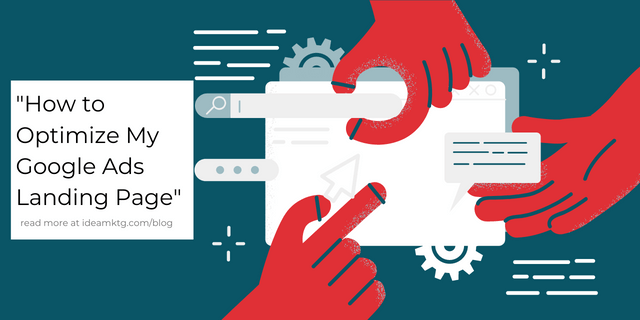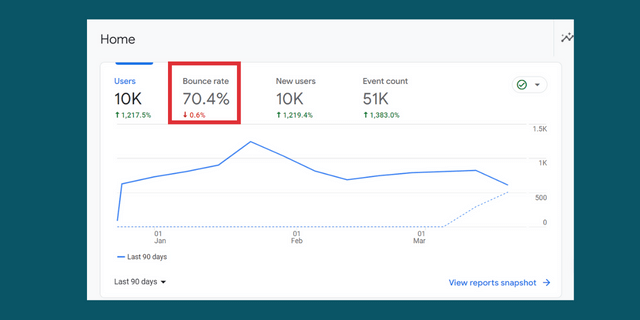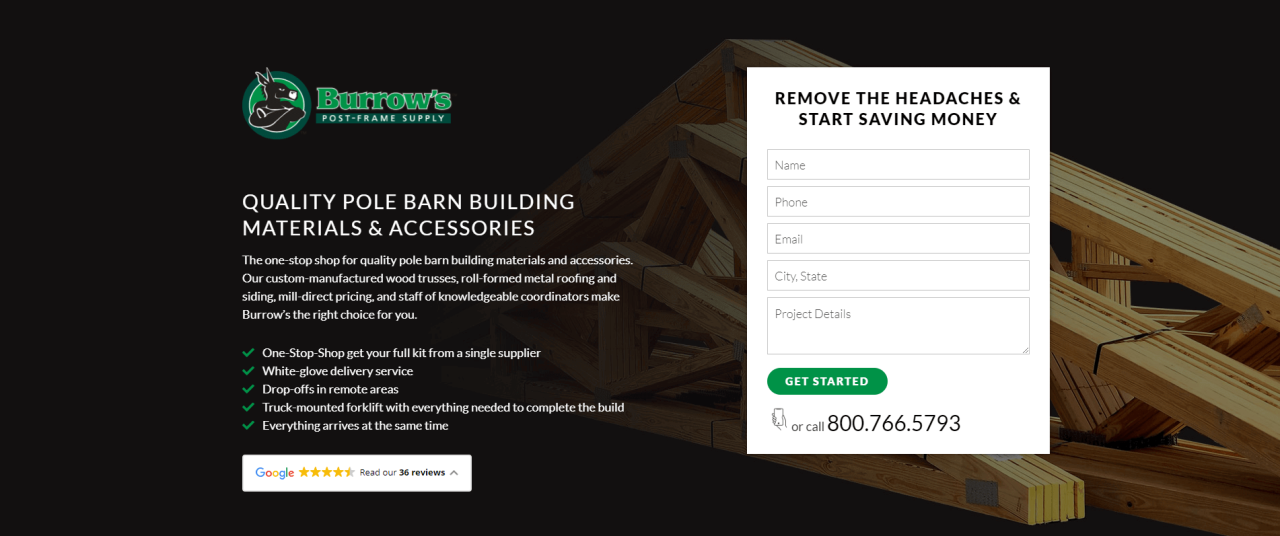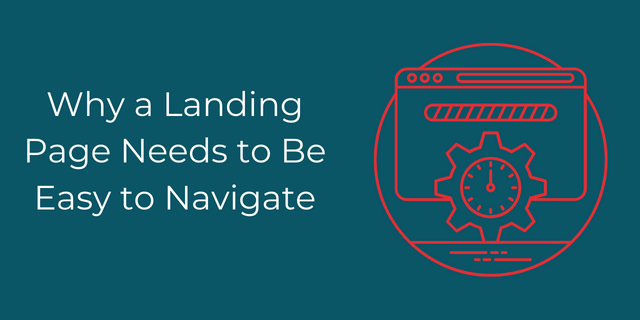The Secret on How to Optimize My Google Ads Landing Page
Google Ads, formerly known as AdWords, are ads that are run on Google’s ad network, such as search engine results. Used effectively, and properly optimized, these ads can match your product or service with some of the millions of users who interact with Google. But to do that, you need to optimize. Many of us have asked the same question, “How to optimize my Google ads landing page”? Continue to read to discover the secret on how to optimize your Google Ads landing page.

Part of Google Ads optimization is making sure all the elements of your ads, with emphasis on the landing page, are designed properly with the user’s experience in mind. That means making sure the landing page has relevant information, is trustworthy and easy to navigate, and functions correctly.
As an expert PPC ads agency Idea Marketing Group shares its insider knowledge on how to optimize your google ads landing page in our blog below. Discover what the landing page optimization best practices are, and the reason why landing page optimization for Google Ads is so important.
Now more than ever learning how to successfully optimize your Google Ads landing pages is crucial. With the high saturation of the internet and volume in search engines like Google, learning ways to make your Google Ads campaigns stand out, be optimized, and engage readers is important.
The Customer Journey Through Optimized Google Ads Landing Pages
Imagine you are a potential customer browsing the internet for a product or service you need. You type in a search term or query into Google, and a massive list of search results appears. Among them, you choose a headline that seems to answer your query. After clicking on it you are taken to a landing page that confirms the product or service does exist and is available. On the optimized page you see a clear call to action to purchase or sign up for said product or service.
The landing page you likely click on in the example above and in your day-to-day life is a well-optimized landing page. In today’s digital landscape, with so many businesses, products, and services readily available it’s more important than ever to make sure PPC ads stand out, engage readers, and convert leads into customers.
That’s where a Google Ads landing page comes in- by crafting an optimized landing page tailored to your specific target audience, that is easy to navigate and engaging, you can increase the chances of landing a conversion in the highly competitive online marketplace.
The customer journey is much more successful when the potential customer is led to a highly optimized landing page through an engaging ad. Keep reading to discover more reasons why you need an optimized landing page for Google Ads.

Why Do I Need an Optimized Landing Page for Google Ads?
If an advertisement does its job, then a potentially interested user clicks on the ad to find out more about your product or offer. The Google Ads landing page is where a user ends up after clicking the ad. The perception and user experience of the page are essential for keeping a low bounce rate. A bounce rate is the percentage of people who leave right after viewing only one website page.
If the landing page offers a poor user experience, then users may want to navigate away, and you will have lost potential customers who were interested enough to click on your ad but either was not enticed enough to continue to your offering or left the landing page because they did not have an optimal user experience.
The second group of people who bounce from the landing page, the ones who leave because they were frustrated with a bad website experience, can be saved by using some best practices for optimizing the landing page. That way, the ad expenditures for those lost users can be salvaged, and your ad campaigns can achieve a higher conversion rate (CTR) overall.
What Causes High Bounce Rates?
Obviously, you want to avoid a high bounce rate, especially on your Google Ads landing page. First, let’s take a look at what exactly can cause high bounce rates:
- Bad website experiences create lead to high bounce rates
- Poor user experience on a landing page may create higher bounce rates
- Slow website load speeds increase bounce rates
- Broken links that cause users to abandon your page increase bounce rates
- Missing call to actions leads to high bounce rates
Discover more reasons why high bounce rates are caused and how you can fix them in this article: What Causes High Bounce Rates?
Get a Low Cost Google Ads Audit
A deep dive to show you what is working, what is not, and what can be done to get you better results.
Best Practices for Google Ads Landing Page Optimization
You should keep some landing page best practices in mind when designing a Google Ads landing page. These include making sure you’re designing the page for the optimal user experience.
The visitor will want to be able to reliably find relevant information from a trustworthy source and easily navigate the page. The user’s perception is also important, as they may not stay on the page long enough to convert if they find the page boring, unresponsive, or slow.
When optimizing a Google Ads landing page, always consider the user’s experience. Google has been focusing on user experience as a major part of its algorithm, which ranks pages in search results.
According to Google, a good user experience includes:
- Fast page and image load times
- Quick browser response to a user’s first interaction with a page
- Mobile-friendly pages
- Safe browsing and usage of HTTPS — secure browsing protocols
- Fewer intrusive interstitial ads — pop-up ads that users may find annoying
In our experience, when it comes to making sure your website has the best user experience, the easiest way to determine is to have a few individuals test it out (preferably coming from different demographics) and let them tell you what causes any confusion.
For our Iterative UX design process, we keep it simple by remembering the 6 Ds. They are:
- Discover – Research users. Collect data. Analyze.
- Define – Create a process. Develop a workflow through wireframes.
- Design – Build structure, and layout through a functional prototype.
- Determine– Conduct A/B testing and application testing.
- Deliver – Get feedback from users.
- (Do Again)
To learn about the iterative UX design process and overall user experience check out our blog User Experience and Websites. This goes into greater detail about how important it is and what you can do to make the most of your website. Don’t forget, improvements to the user experience can lead to a more optimal Google Ads landing page, better search engine results, better ad performance, and ultimately a better conversion rate.
How to Build a Relevant Google Ads Landing Page
First impressions are important, considering the user has just clicked an ad looking for more information and will have some expectations that will need to be met for them to continue with the engagement. Your Google Ads landing page visitors will want relevant information in a simple format without unnecessary complexities.
You can take a deep dive into the topic of building a landing page with our blog, How do you build a landing page that works?

However, if you want to learn how to build a Google Ads landing page that works, you can break it down into a few key areas:
- Create a simple and easy landing page design
- Have a visually appealing page
- Showcase engaging content
- Link effectively throughout your landing page
Ad relevance, along with the expected click-through rate (CTR) and the user’s landing page experience, will help determine the ad’s Quality Score. The Quality Score will let you know how your ad compares to the ads of other advertisers on a scale from 1 to 10. The quality score plays an important role in whether or not your ad gets displayed, so you need this number to be as high as possible.
Relevant information, in the context of a specific ad, means the user is provided with information that matches their search and is consistent with the message presented to them in the ad. If a user searches for a certain keyword and clicks on an ad about that keyword, they will want to find themselves on a landing page with more information on that keyword.
Otherwise, the user is most likely going to lose trust in your Google Ads landing page and likely will bounce instead of taking the desired action.
Use Relevant Keywords on Your Landing Page
As a Google Ads expert, we cannot stress enough the importance of using targeted keywords on your Google Ads landing page. The landing page is where convert your target audience into a customer or lead. Therefore, optimizing your landing page with the right keywords can significantly impact your ad’s overall performance.
Your targeted keywords are specific words or phrases that your target audience is likely to use when searching for products or services related to your business. When users search for these keywords, Google matches their search query with the keywords in your ads, and if they are relevant, your ad could get picked to be displayed. This is where the importance of relevant landing pages comes in.
Using targeted keywords on your landing page can help to improve your ad Quality Score, which is a metric that Google uses to determine the relevance and quality of your ads. A high-Quality Score means your ad is more likely to be shown at a lower cost per click (CPC) and a higher ad rank. This can lead to more clicks and conversions, resulting in a better return on investment (ROI).
When creating your landing page, make sure to include the targeted keywords in the page title, header tags, meta description, and throughout the content. However, it’s crucial to ensure that the keywords are used in a natural way that makes sense to the user. Keyword stuffing, which is the overuse of keywords, can lead to a poor user experience and negatively affect your Quality Score.
Furthermore, using targeted keywords on your landing page can help to improve the relevance and credibility of your ad. If users see the same keywords on your ad and landing page, they are more likely to perceive your business as trustworthy and relevant to their needs. This can increase their likelihood of taking the desired action, such as making a purchase or submitting a lead form.
Using targeted keywords on your landing page is a crucial aspect of optimizing your Google Ads campaigns. It can improve your Quality Score, lower your CPC, and increase your ROI. However, it’s essential to use the keywords in a natural way that makes sense to the user and avoid keyword stuffing. By doing so, you can create a relevant and credible user experience that drives conversions and helps achieve your business goals.
Highlight Unique Features and Use the Same Value Proposition
One of the critical aspects of a successful ad campaign is creating a consistent and compelling user experience for your target audience. This means using the same value proposition and highlighting key features in both your ads and Google Ads landing pages.
The value proposition is a statement that outlines the unique benefits that your product or service provides to your target audience. It’s the reason why someone should choose your business over your competitors. When creating your Google Ads, it’s essential to include a clear and concise value proposition that sets you apart from the competition. This value proposition should be repeated on your landing page to ensure consistency and build trust with your users.
For example, if you highlight “Free Consultation” within your ads, then “Free Consultation” should also be highlighted on your landing page. This is the same idea with your Call to Action, the same ones should be used in ads and landing pages. If your CTA is “Request a Free Consultation” then you should use the same CTA on your landing page.
Highlighting key features of your product or service is another critical aspect of your landing page. These key features are the specific aspects of your product or service that make it unique and valuable to your target audience. Highlighting these features on your landing page can help to reinforce your value proposition and increase the likelihood of conversion within your target audience.
Using the same value proposition and highlighting key features in your ads and Google Ads landing pages can have several benefits.
- First, it can help to create a consistent user experience, reducing confusion and increasing trust among your target audience. A consistent user experience can lead to higher engagement rates and lower bounce rates, which can positively impact your Quality Score and ad rank.
- Second, using the same value proposition and highlighting key features can help to increase conversion rates. When users click on your ad and land on your page, they are expecting to see the same value proposition and features that were advertised. If they don’t see this, they may become confused or mistrustful, reducing the likelihood of a conversion.
- Third, highlighting key features can help to differentiate your product or service from the competition. By highlighting the unique benefits and features of your offering, you can show users why they should choose your business over your competitors. This can help increase brand loyalty among your target audience.
How to Make Your Google Ads Landing Page Trustworthy
Users are going to want to visit pages that they believe to be trustworthy to spend their money. If they believe a site to look untrustworthy, they will leave the site, and the ad will have failed to convert. This is not ideal as it will decrease your overall campaign ROI and increase wasted spend.
To make sure your landing page will be considered trustworthy by Google:
- Be open about privacy policies and how user information is used or stored
- Display your business contact information prominently
- Have a professional site design
- Don’t use pop-ups
- Display any relevant certifications or awards
- Use secure payment methods, return policies, and money-back guarantees
- List customer testimonials and reviews
Other ways to make sure your Google Ads landing page is trustworthy may depend on the product you’re offering. For example, you may offer some products on a trial basis with a no-hassle return policy.
To create an optimal landing page experience, the page should communicate that the product is safe to purchase and that the company offering the product can be trusted.
Trust is one of the most critical factors when trying to reach your target audience. Without credibility, you are likely to convert far fewer customers. There are many factors that go into building website page credibility, and we go into these a bit more in-depth in our recent article, 8 factors that increase website credibility.

Why a Landing Page Needs to Be Easy to Navigate
The user’s Google ad landing page experience contributes to the ad’s Quality Score. A poor user experience, partially stemming from difficult navigation, could cause the ad to lose search engine ranking. Google crawlers can also more easily crawl the site if there is good navigation.
Overly complex or confusing site navigation may increase your site’s bounce rate. Your ad campaign could needlessly suffer if your ads are getting a good CTR but the visitors are not converting because they are bouncing due to poor navigation design. Ads can perform better and conversion rates can increase when the landing page’s navigation is properly designed.
A solution could be to make the navigation simple. Too many buttons and menus could confuse the user. Every page should be accessible from links, and users should be able to return to previous pages by clicking links. Most importantly for a Google ad landing page, a good call to action (CTA) needs to be prominent and clear to convert visitors to customers.
Why Your Google Ads Landing Page Must Function Correctly
In addition to good navigation, your landing page needs to function correctly. If the site takes too long to load, the user may be frustrated with the wait time and leave the site. Similarly, if the page’s navigation doesn’t work properly, sends the user to the wrong pages, or takes too long to load, users will have a poor experience and possibly leave the page.
Landing pages also need to be optimized for specific devices. Mobile device use has been increasing, with 62.5% of web traffic coming from mobile devices. That means many of the site’s visitors will expect the page to be responsive to their devices. Pages need to function correctly for each type of device a user may use, such as desktop or mobile devices. To get users to the CTA and convert them to customers, a properly functioning landing page is a top priority when optimizing landing pages.
Google Ads landing page optimization can bring a higher return on investment for a Google Ads campaign by ensuring a low bounce rate and a higher conversion rate. When landing pages work correctly, are easy to navigate, show relevant information, and are considered trustworthy, visitors who have clicked on an ad and landed on a landing page have a higher chance of converting and becoming paid customers, making for a successful Google Ad.
Free Marketing ROI Tool and Resources to Optimize Your Google Ads Landing Page
Upon completing this article you will have a comprehensive understanding of why optimizing your Google Ads landing pages is essential for standing out in today’s highly competitive digital marketplace. By understanding your target audience, implementing best practices for landing page optimization, and creating engaging content, you can increase conversions, drive engagement, and ultimately grow your business.
If you are still uncertain how effective your Google Ads campaigns are, don’t worry. There is tool that can help you assess your marketing. Just check out this free marketing ROI tool.
Don’t let your Google Ads campaigns fall flat – take the time to invest in landing page optimization and see the results for yourself. With the tools and knowledge provided in this article, you have everything you need to create a winning Google Ads campaign that attracts and converts your ideal customers.
If you need help creating optimized Google Ad landing pages, there are various tools and resources to help your business stand out online. Try to increase your conversion rates with a targeted landing page and learn how to improve your Google Ad campaign performance.

